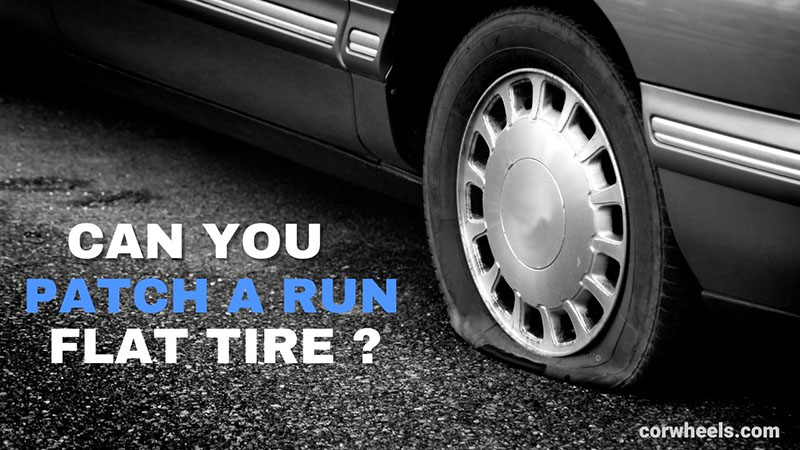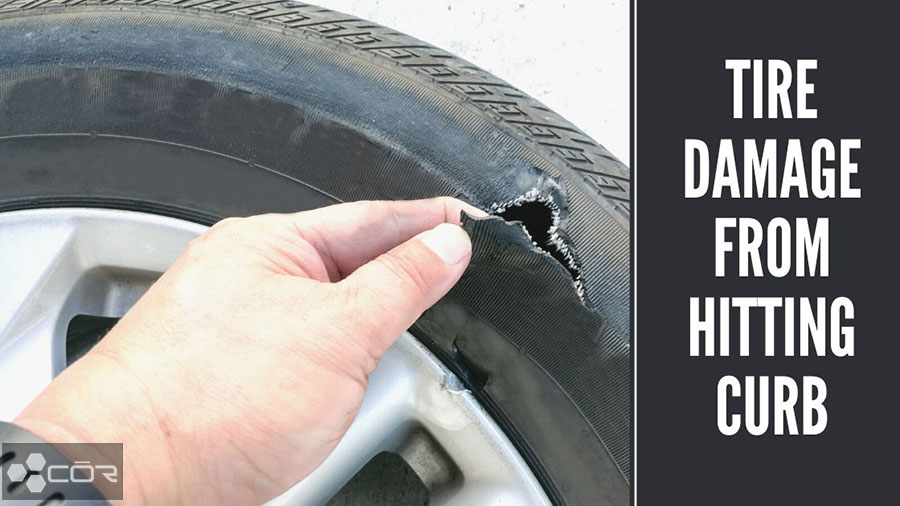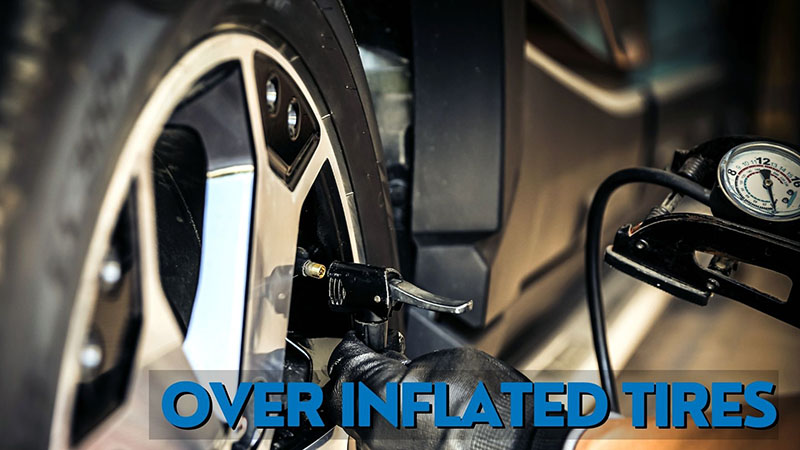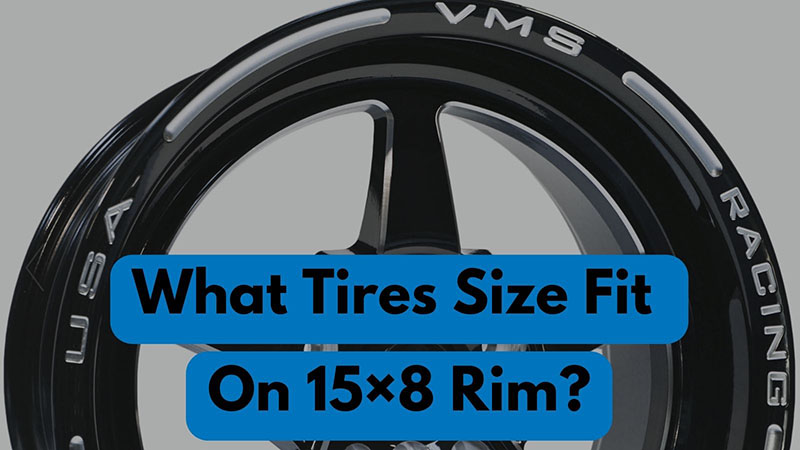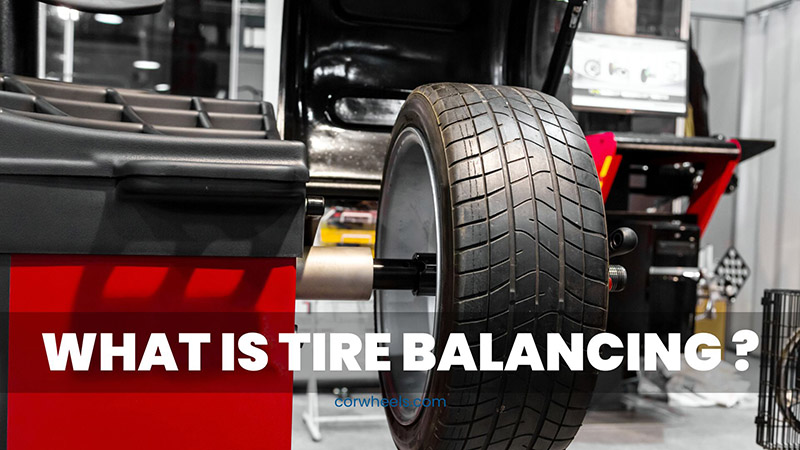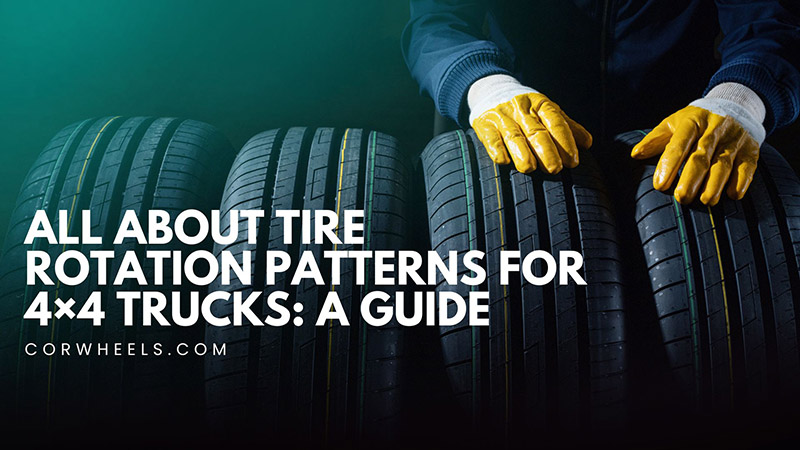Rolling nails and flat tires in the middle of the road are situations that every driver encounters from time to time. In these circumstances, you have 3 options, either change the spare tire, call a mobile car repair service, or fix it yourself (patching or plugging).
The repair shop and roadside assistance is quite expensive and not available everywhere. And changing a tire yourself is not something everyone can do. So, the question is, can run-flat tires be patched? Read the article below to learn more.
In this article:
Are Run Flat Tires Repairable? Can You Patch Them?
Indeed, you can. It all relies on the type of damage or puncture the run-flat tire has sustained.
A run-flat tire (RFT) can be patched to prevent additional damage. In addition, compared to riding with a punctured one, these improvements will make your experience on the road considerably more comfortable.
Patching won’t help, though, if the product’s hole is too big. The only option you will have in this circumstance is to replace it with a new part.
How are Run Flat Tires Patched?
Always start by taking this component out of the wheel. Specifically, it would be beneficial if you rubbed mild abrasives on the punctured region to ensure that no fragment of the object was still stuck in the rubber.
Then, use a plaster patch to seal the hole in the product once there are no longer any objects inside the rubber component. With this technique, you can use your wheel repeatedly, even when it has multiple punctures, without worrying about its longevity.
In most cases, you hardly ever have a tire suffer through three or more punctures in its lifespan unless you routinely drive on roads covered in debris or road hazards.
Another way that some tire shops turn to is plugging, driving a solid rubber stud into the nail hole. It works well to close the hole made by a nail or other sharp object and is simple to use without removing the tire from the rim.
For the DIY vehicle owner, this quick remedy is also readily accessible off the market. There were no negative effects associated with this plug-in style of puncture cure, and this method of patching many punctures won’t shorten the lifespan of the tire.
It will, however, increase the risk of your subsequent journey significantly.
How Safe Is A Patched Run Flat Tire?
If the product was patched properly, you can use it as normal. As a result, we believe that this approach achieves a very high degree of safety standards and helps to reduce the expense of replacement tires.
But when the tear widens, it doesn’t seem to have much of an impact. Additionally, patching is bad because it could weaken the tire’s structure and make the tire frame more susceptible to oxidation.
Is Plugging Or Patching A Run Flat Tire Better?
It depends.
Plugging is cheaper and easier to do without removing the tire. But only small punctures (no more than 6mm ¼ inch in diameter) by nails or screws are repairable this way.
Otherwise, patching is the way to go, which requires more elbow grease yet lasts longer.
What If Patching Does Not Work?
The only option in this situation is to acquire a new set of tires. Run-flats can cost up to twice as much as a comparable conventional tire.
Run-flat tires are made to carry the vehicle’s weight and function even when the tire pressure is zero. The tire wall will be harmed if a typical tire is punctured and operated at atmospheric pressure.
Patching won’t work if the tire has sustained more damage than was anticipated, especially in the event that its reinforced sidewall structure is destroyed. Typically, this occurs as a result of exceeding the car’s speed or distance limitation or the tires have been driven for a long distance with little or no pressure.
When To Repair And When To Replace Run-Flat Tires?
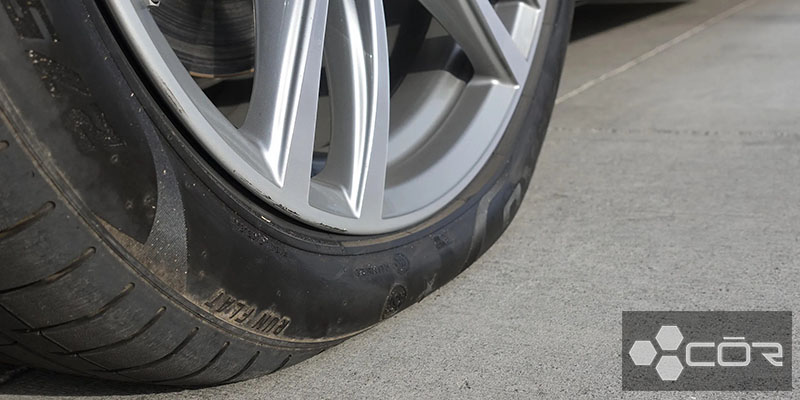
The repair can differ between manufacturers, according to the tire maker. Several suggest a repair, while others don’t; Run-flat tires may be repairable, but it depends on factors such as how far the tire was driven after puncturing, how much air was lost, and how the tire was handled.
For example, while Bridgestone allows for a run-flat tire repair, provided that the PSI reaches at least 15, Continental advises against doing so.
Any damage that might have resulted from a tire having a puncture or losing pressure needs to be carefully assessed before deciding if it can be placed back in use. So check with your dealership first.
In some circumstances, the tire cannot be repaired if it has a “Do Not Repair” label on the sidewall, the tire was driven with an low inflation pressure under 15 PSI, the tire has abrasion damage, or if it has any other unrepairable condition.
It is advised to change your tires every 6 years and rotate them once every six months or 5,000 – 7,500 miles to increase their longevity, although you might need to do it sooner if the tread is worn-out.
FAQs
How Long Will a Patched Tire Last?
Patches are believed to endure for about seven to ten years. Yet, if the tire repairs goes wrong or there are problems with the hole’s position, this tire might not endure.
Can I Drive Fast with a Patched Tire?
Yes, you can – if your patch product is applied properly and the tire can maintain proper air pressure.
But, most auto manufacturers and tire specialists stated that a tire that has been punctured and mended must be classified as a non-speed rated tire and should only be driven at the maximum speed of 85 mph.
Is Patching a Flat Tire a Permanent Fix?
No. And don’t patch a tire more than 2 times.
Like regular tires, a tire patch won’t hold up forever, so you shouldn’t rely on them. If the leak is in an acceptable region, opt to install a tire plug-patch combination as a long-lasting solution. Otherwise, you should get a replacement.
Conclusion
In general, whether a puncture, a run-flat tire can be patched or not, depending on the situation. However, the internal structure with tire pressure monitoring system, which conventional tires don’t have, eliminates the issue when its holes are caused by hitting a small nail, sharp stones, or a piece of metal that shreds the tire.
To be safe, drivers should carry a spare tire ready to replace when needed. The experience of many users is always to bring an electric pump and temporary patch glue so that when seeing a tire pressure warning, they must immediately inflate.
See more:

